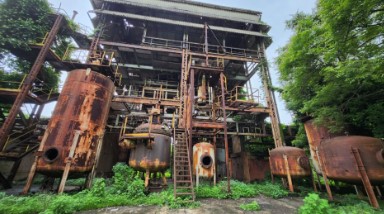Decades after the Bhopal gas tragedy, the disposal of toxic waste from the Union Carbide plant is stirring new concerns. About 350 metric tons of hazardous materials are slated for incineration at the Treatment Storage Disposal Facility at Pithampur in Indore. However, the facility has failed six critical tests for containing harmful emissions, and the projected cost has surged from ₹22 crore to ₹126 crore, a significant increase.
The waste, representing just a fraction of the total hazardous material, threatens to release dangerous organochlorines, dioxins, and furans during incineration. These substances are known carcinogens, and the facility’s location, close to several villages within a 2 km radius, exacerbates the potential health risks.
The World Health Organisation has issued warnings about the dangers of incinerating waste at an inadequate site. Gautam Kothar, coordinator of Lok Maitri Sansthan, an NGO, expressed concern, stating, “We opposed the incineration plan earlier. Despite promises from former officials, the waste is now set to be burned in Pithampur. We will protest if this plan proceeds.”
The disposal issue has faced considerable resistance over the years. In 2012, the Madhya Pradesh Government contested the incineration plan in the Supreme Court. Former Chief Minister Babulal Gaur and Environment Minister Jayant Malaiya voiced strong objections due to the risk of contaminating local water sources.
States including Gujarat, Maharashtra, and Andhra Pradesh have all declined to incinerate the waste, even with financial incentives. Kunwar Vijay Shah, the Minister for Gas Relief and Rehabilitation, stated, “We have secured a budget from the central government and issued tenders for the disposal. We aim to complete the incineration within a year.”
The long-standing toxic waste has already contaminated soil and groundwater, impacting 42 settlements from 2004 to 2018, with the contamination now affecting 29 additional settlements in recent years. Despite a Supreme Court mandate to provide clean water, many areas continue to suffer.
Residents of Brij Vihar Colony, located approximately 3 km from the factory, face severe health issues linked to contaminated water. “The water leaves white marks on containers within weeks,” said Bhagwati Prasad Pandey, a local. “The municipal corporation has failed to provide clean water despite orders.”
In Arif Nagar, directly across from the factory, the lingering effects of the disaster are evident. Amina, a resident, shared her tragic experience, “My child was born with severe disabilities due to the polluted water. Our family struggles with medical expenses and ongoing health issues.”
The contamination has resulted in various health problems, including kidney stones and skin infections. Danu Singh and Aashiya, both residents, describe the severe impact on their children’s health. “Our child suffers from constant vomiting and weak mental health because of the contaminated water,” Singh said. Aashiya added that her child endures frequent seizures and severe stomach pain.
In 2014, the United Nations Environment Programme offered to assess the toxic waste, but the offer was ignored by the government. “Even after 30 years, I suffer from persistent itching,” said Kamla, a local resident. Batham voiced similar frustrations, citing ongoing health issues and lack of access to clean water.
Experts call for accountability under the Polluter Pays Principle for Union Carbide and Dow Chemical, but no legal action has been pursued against these companies, which argue they are not subject to Indian jurisdiction.

















